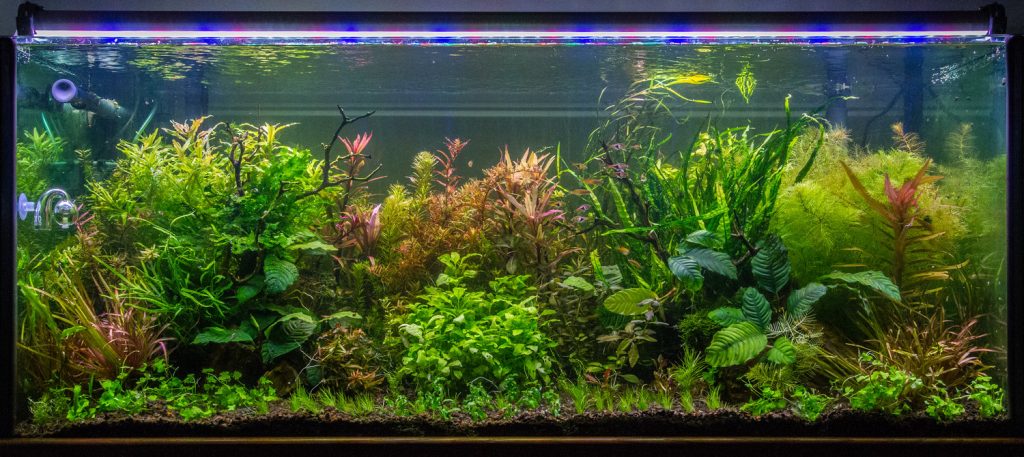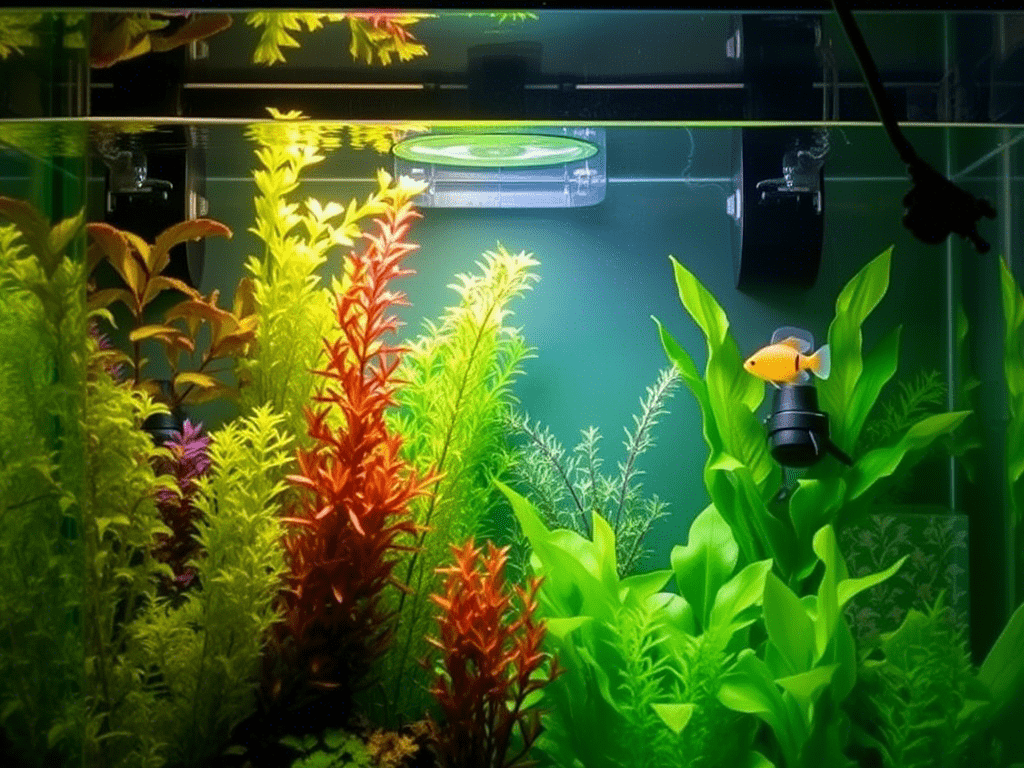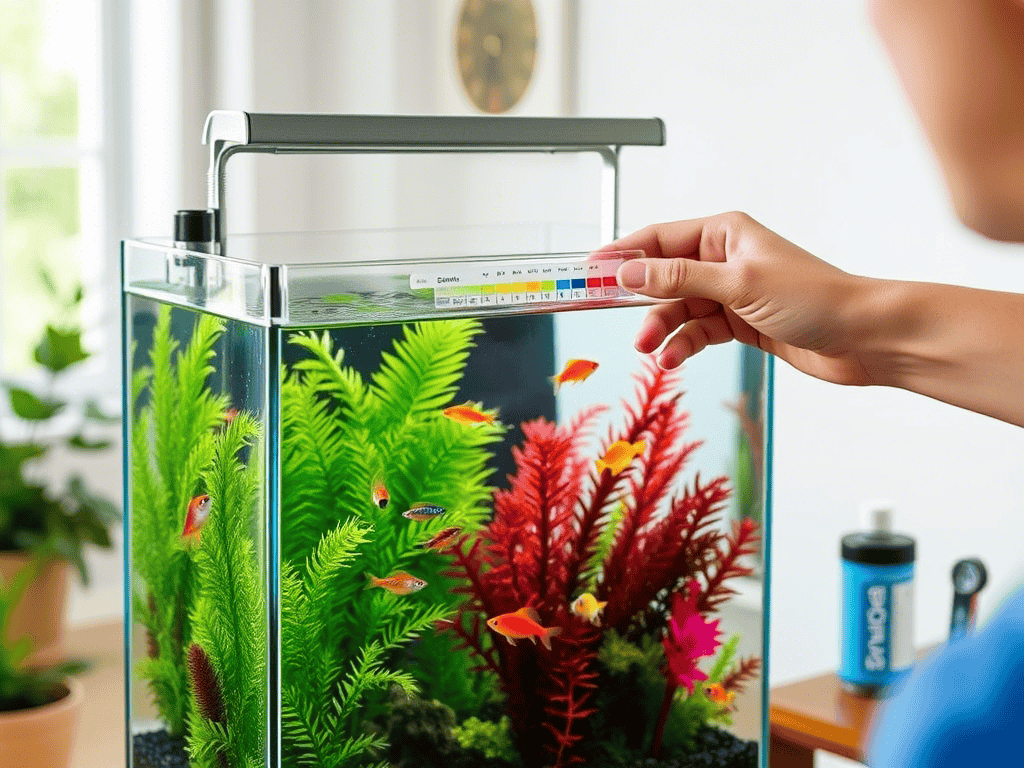
Are you tired of that unsightly green film covering your beautiful aquarium? Banish Algae from Your Fish Tank Forever ? You’re not alone! Algae growth is an inevitable challenge that can transform your underwater showcase into a murky mess. While a small amount of algae is actually natural and beneficial, excessive growth obscures your view and can potentially harm your aquatic friends. In this comprehensive guide, I’ll walk you through effective natural and chemical solutions to reclaim your crystal-clear waters. Whether you’re a seasoned aquarist or just starting out, these proven techniques will help you maintain that pristine tank you’ve always wanted.
Banish Algae from Your Fish Tank Forever & Types
Before declaring war on algae, it’s important to identify your specific opponent:
Green Algae
This common type appears as green spots or threads on surfaces and is generally harmless. It’s present in most tanks and indicates a healthy ecosystem when kept in check.
Brown Algae (Diatoms)
Often found in new tanks, these brownish coatings are easy to remove and typically disappear over time. They’re caused by silicates in the water and usually part of the cycling process.
Blue-Green Algae (Cyanobacteria)
This slimy, sheet-like growth isn’t actually algae but bacteria that can spread rapidly. It forms a plaque on surfaces and can produce toxins harmful to fish.
Red or Beard Algae
One of the most stubborn types, typically growing on plants and difficult to eradicate. It indicates CO2 fluctuations in planted tanks.
Green Water
Microscopic algae floating in the water column, turning your entire tank green and requiring specialized treatment.
What Causes Algae Overgrowth?
Understanding what fuels algae helps prevent future outbreaks:
- Excessive light: Too much direct sunlight or leaving aquarium lights on for extended periods
- Nutrient overload: Overfeeding fish, decaying plant matter, and infrequent water changes create a nutrient-rich environment
- Imbalanced ecosystem: New tanks without established beneficial bacteria or lacking sufficient plant competition
- Poor maintenance: Inconsistent cleaning routines allow algae to establish strong footholds
Read More: Aquarium Water is Cloudy how to fix it fast
Natural Methods to Control Algae
1. Optimize Lighting
Limit your aquarium lighting to 6-8 hours daily and position your tank away from direct sunlight. For severe cases, try the “blackout method” – covering your tank completely for 3-5 days to starve light-dependent algae.
2. Practice Proper Feeding Habits
Only feed what your fish can consume within 3-5 minutes, once or twice daily. Excess food decomposes into nutrients that fuel algae growth. Remember, slightly underfed fish are healthier than overfed ones!
3. Perform Regular Water Changes
Weekly water changes of 10-15% help remove excess nutrients that algae feed on. Use a gravel vacuum to remove debris from the substrate during changes.
4. Manual Removal Techniques
For existing algae, try:
- Glass scraper or algae pad for tank walls
- Toothbrush for decorations (twirl to collect hair algae like spaghetti)
- Gentle rubbing for plant leaves
- Hydrogen peroxide dips for heavily affected plants (out of tank)
5. Enlist Algae-Eating Allies
Nature’s clean-up crew can help maintain balance:
- Amano shrimp: Excellent for hair and thread algae
- Nerite snails: Perfect for hard surfaces without breeding prolifically
- Otocinclus catfish: Gentle algae eaters suitable for community tanks
- Siamese algae eaters: Effective against most algae types including troublesome beard algae
6. Create Plant Competition
Fast-growing plants compete with algae for nutrients. Consider adding:
- Floating plants like duckweed or water lettuce to reduce light
- Stem plants that absorb excess nutrients
- Easy-to-grow plants like anubias or java fern for beginners
Read More: 10 Essential Hacks to Prepare Your Aquarium for Vacation
Chemical Methods to Control Algae
While natural methods are preferable, sometimes chemical intervention becomes necessary for severe outbreaks:
7. Use Liquid Carbon Supplements
Products like Seachem Flourish Excel serve dual purposes – providing carbon for plants while having algaecidal properties. However, use with caution as overdosing can harm some plants and invertebrates.
8. Consider Hydrogen Peroxide Spot Treatments
For targeted control, you can apply 3% hydrogen peroxide directly to problem areas using a syringe with the filter turned off. Limit to 1-2 ml per 10 gallons and observe carefully.
9. Commercial Algaecides – Proceed with Extreme Caution
Products containing polyquaternium compounds (like API AlgaeFix) can effectively eliminate algae but pose significant risks to invertebrates and fish. These should be last resorts and used at reduced dosages, never with shrimp or snails present.
10. UV Sterilizers for Green Water
For persistent green water (suspended algae), UV sterilizers kill floating algae cells as water passes through, resulting in clear water within days.
Prevention Strategies
The best algae control is prevention:
- Test water parameters regularly to catch imbalances early
- Establish a consistent maintenance schedule
- Balance lighting with plant density
- Consider CO2 injection for heavily planted tanks to give plants competitive advantage
1. Can you permanently remove algae from a fish tank?
No, it’s impossible to remove algae permanently. Algae spores are present in tap water and air, so even after thorough cleaning, algae can return. The key is to control and minimize its growth by maintaining a balanced tank environment and practicing good aquarium habits.
2. What causes algae to grow so fast in my aquarium?
Rapid algae growth is usually due to excess light, too many nutrients (from overfeeding or decaying matter), and infrequent water changes. Tanks placed near windows or exposed to ambient light are especially prone to algae blooms.
3. How do I naturally get rid of algae in my fish tank?
. Reduce the duration and intensity of aquarium lighting (4–8 hours per day is often sufficient).
. Perform regular, smaller water changes (10–20% weekly).
. Avoid overfeeding fish; only feed what they can eat in a few minutes.
. Add algae-eating species like Amano shrimp or Nerite snails.
. Increase live plant density to outcompete algae for nutrients.
4. Are chemical algae removers safe for my fish and shrimp?
Chemical algaecides like API Algaefix can be effective, but they may harm sensitive species such as shrimp and snails. Always follow dosing instructions carefully and consider using hydrogen peroxide as a spot treatment, which is generally safer for most fish when used correctly.
5. Why does algae keep coming back after I clean my tank?
Algae will return if the underlying causes-excess nutrients, too much light, or poor water circulation-aren’t addressed. Cleaning alone is not enough; you must adjust your tank’s environment and maintenance routine to keep algae under control.
6. How often should I clean my tank to control algae?
Weekly partial water changes (10–20%) and regular removal of visible algae from glass, decorations, and plants are recommended. Avoid over-cleaning or changing all the water at once, as this can disrupt beneficial bacteria.
7. What’s the best way to prevent algae in a new aquarium?
– Cycle your tank properly before adding fish.
– Limit light exposure, especially in the first few weeks.
– Avoid overfeeding and perform regular water changes.
– Test and monitor water parameters to ensure balance.
8. Will adding more plants help control algae?
Yes, live plants compete with algae for nutrients and can significantly reduce algae growth. Fast-growing plants are especially effective at outcompeting algae.
9. Is it okay to have some algae in my tank?
A small amount of algae is normal and even beneficial, as it’s part of a healthy ecosystem. The goal is to keep it in check, not to eliminate it entirely.
10. What are the most effective algae eaters for freshwater tanks?
Amano shrimp, Nerite snails, Otocinclus catfish, and Siamese algae eaters are popular choices for natural algae control in freshwater aquariums.
Conclusion
Combating algae successfully requires understanding your tank’s unique ecosystem and addressing the root causes rather than just treating symptoms. While natural methods should always be your first approach, sometimes a combination of strategies yields the best results. Remember that a small amount of algae is normal and even beneficial – perfection isn’t necessarily the goal, but rather a balanced, healthy aquarium where both fish and plants can thrive. With patience and consistent care, you’ll master the art of keeping your underwater world beautifully clear.


